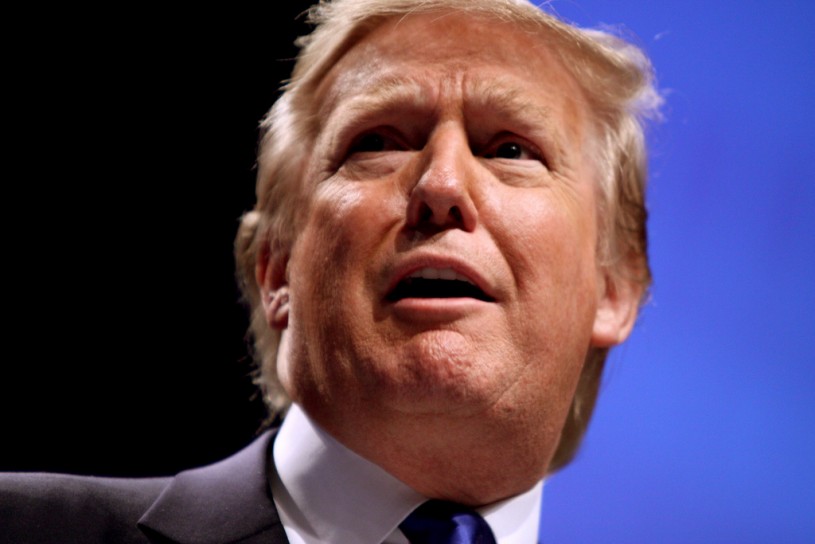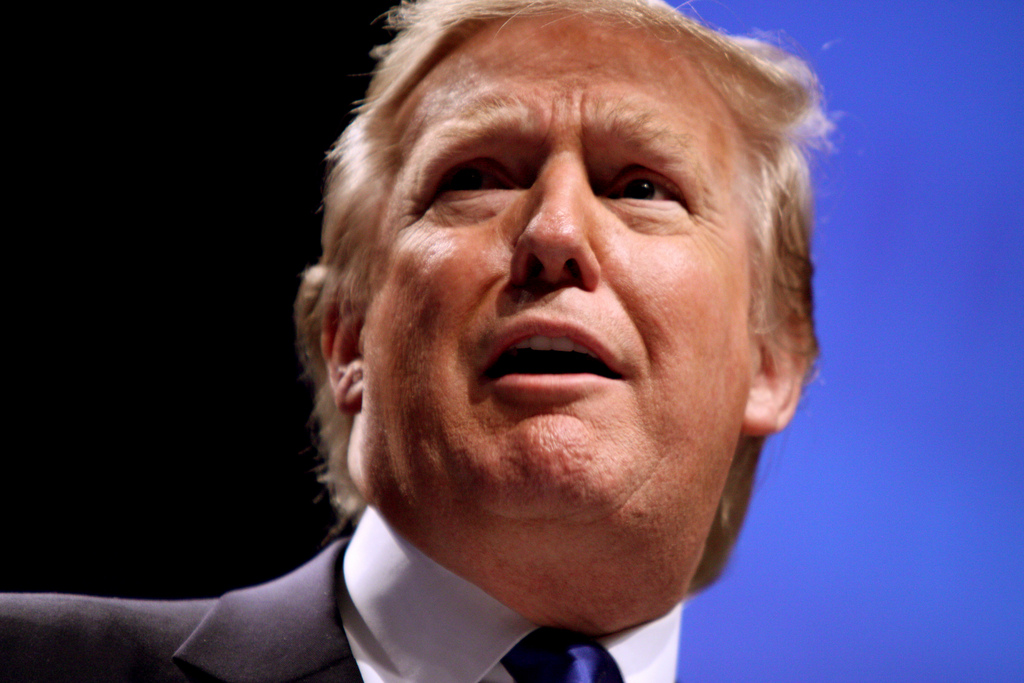
(Image: Greg Skidmore / Flickr)
Republican front-runner Donald Trump has just released his much-talked-about plan for restructuring the federal tax code. If you listened to his speeches, you might think it was full of benefits for working families and progressive ideas about asking the wealthy to pay their fair share. However, if you drill down into the details, you’ll see the same tired ideas hidden behind a populist tone and false rhetoric.
Here are the top falsehoods peddled by Trump’s much-touted tax plan:
Trump’s First Untruth: The tax plan does not add to our deficit or national debt.
Reality:
This tax plan would put a gargantuan hole in federal revenues that would send the deficit and debt through the roof. The number crunchers at Citizens for Tax Justice calculated that Trump’s tax plan would cost more than $10 trillion over the next ten years. As CTJ President Robert McIntyre put it, “there is no possibility that this plan would not be a gigantic tax cut for the rich and a gigantic revenue loser for the government.”
Trump’s Second Untruth: This tax plan will provide “major tax relief to middle income and most other Americans.”
Reality:
While it’s true that nominal tax rates would be reduced under Trump’s plan, the impact skews heavily towards the wealthy. The benefit for the bottom 20% is just $250 per year while the benefit for the top 1% is a whopping $184,000! So yes, technically everyone benefits, but saying this is a greater help to working families over the wealthy is patently false. The plan would shift even more money towards the very top, which is particularly startling when you consider that the top 1% have captured nearly all new income since 2009.
Trump’s Third Untruth: This plan will end the preferential tax treatment of hedge fund managers.
Reality:
Trump often talks about closing the carried interest loophole, a particularly insidious loophole that allows hedge fund managers who often make tens of millions of dollars annually to treat their income as capital gains rather than as ordinary income. This means they pay just 23.8% rather than 39.6%, the top regular income tax bracket. Here again, the devil is in the details and the rhetoric does not match the reality. While the tax plan does eliminate this egregious loophole, it also reduces the top income tax rate to 25%, meaning the tax hike on hedge fund managers is just 1.2% instead of the 15.8% hike that Bernie Sanders and Hilary Clinton endorse.
Trump’s Fourth Untruth: The estate tax is “double taxation” and “a lot of families go through hell” to pay it.
Reality:
The estate tax is the most progressive revenue raiser in the tax code, putting a small levy on the intergenerational transfer of immense wealth. Most of the assets impacted by the estate tax have never been taxed as a result of the Trust Fund Loophole that President Obama has proposed closing. The ultimate impact of the estate tax is on the heirs and heiresses to the largest fortunes in the country, not middle class families. In fact, the threshold for paying the tax is $11 million for married couples, more money than anyone in the bottom 99% can expect to accumulate. Just two in every thousand households are impacted by the estate tax. So on the estate tax, Mr. Trump is wrong on both accounts. Further, eliminating the estate tax would cost $246 billion over the next ten years.
Trump’s Fifth Untruth: The plan will lead to significant economic growth and job creation.
Reality:
Trump is relying on the same debunked supply-side ideas that George H.W. Bush referred to as “voodoo economics” many moons ago —cutting taxes for the wealthy and hoping it benefits everyone. As Kansas Gov. Sam Brownback learned the hard way, cutting taxes does not spur economic growth; it simply creates an enormous deficit. Brownback cut taxes dramatically in an effort to spur growth and instead created major public debt and provoke Moody’s to downgrade its debt rating. Setting aside the ecological implications of endless economic growth, the idea that tax cuts, especially for the wealthy, will pay for themselves in increased growth is an idea as old as it is wrong.
More details are continuing to come out about this tax plan and these five hardly scrape the surface of the implications of Trump’s tax overhaul. As new details leak out, remember its not the fancy packaging, or rhetoric, that matters but the impact these reforms will make. And so far, the impact is bad for ordinary Americans and quite good for the millionaires and billionaires of the 1%.
